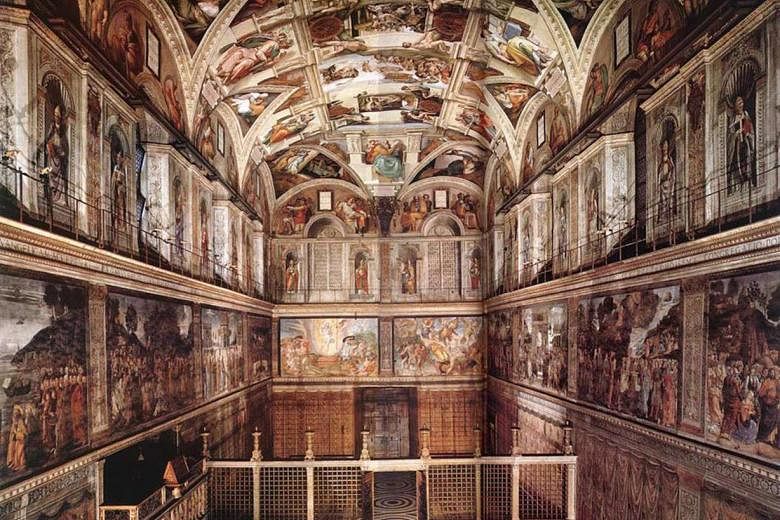VATICAN CITY (Reuters) - The success of a new high-tech air purification, climate control and lighting system means the frescoes of the Sistine Chapel will likely not have to be restored again, a Vatican official said.
"In our opinion, the most interesting thing to come out of (recent) studies is that the Sistine Chapel does not need to be restored again," said Vittoria Cimino, head conservator at the Vatican Museums.
She was speaking at the publication on Thursday night of technical and artistic studies of the chapel a year after the installation of new lighting and air conditioning systems.
Dust brought in from outside, body sweat and carbon dioxide pose a major risk to the masterpieces, which are over 500 years old.
The frescoes, many by Michelangelo, include one of the most famous scenes in the history of art - the arm of a gentle, bearded God reaching out to give life to Adam.
Following a 14-year restoration that ended in 1994, when the number of visitors stood at about 1.5 million a year, experts sought new techniques to protect the delicate frescoes as the number hit six million.
"The results of the restoration work carried out 20 years ago are still outstanding. Therefore, our efforts need to focus on the preservation of the actual situation," she told Reuters.
The new air filtering and conditioning system moves air at a very slow speed so as not to damage the frescoes.
Hidden cameras, including two on the massive Last Judgement panel behind the altar, check the number of people in the chapel while some 70 monitors control machines outside it that determine the air flow, filter out dust and reduce humidity.
"The situation is under control as long as we manage to keep in check the level of carbon dioxide, which was far too high, and which we have more than halved," she said. "If we keep some other indicators under control, such as the temperature - which used to be too low, triggering chemical mechanisms which created problems - ... we have nothing to worry about".
The frescoes, inaugurated in October 1512 by Pope Julius II, include the famous "Last Judgement" on the wall behind the altar that Michelangelo painted separately between 1535 and 1541.
She said the chapel was ready to withstand an expected increase of visitors during the Jubilee Year of Mercy, which Pope Francis convoked and which starts in December. "Luckily, we have made it in time and we think that we have managed to make the Sistine Chapel safe and sound," she said.

